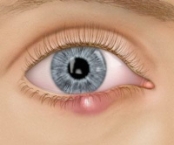Chalazion/Cyst
- What is a chalazion?
- What are these eyelid glands?
- What causes a chalazion?
- What are the symptoms of a chalazion?
- How is a chalazion treated?
What is a chalazion?
A chalazion (pronounced Ka-lay-zee-on) is a tiny lump of the upper or lower eyelid caused by inflammation of a gland of the lid. It may be soft and fluid-filled or firmer. A chalazion is also referred to as a meibomian cyst, tarsal cyst, or conjunctival granuloma.
What are these eyelid glands?
Eyelid glands are called the meibomian glands. They are also known as the palpebral glands, tarsal glands, or tarsoconjunctival glands. There are 30 to 40 of these glands in each of the upper and lower lids. The tiny openings of each of these oil or sebaceous glands are just behind the lid lashes at the lid margins. These glands produce a thick liquid secretion that is discharged into the tear film of the eye. This liquid is a mixture of oil and mucus and is called sebum. The liquid acts to lubricate the surface of the eye.
What causes a chalazion?
The narrow opening through which a meibomian gland secretes its material can become clogged from narrowing of the opening or hardening of the sebaceous liquid near the opening. If this occurs, the gland will have a backup of the material it secretes and it will swell. This leads to thickening of the walls of the gland and leakage of oil into the lid itself, causing inflammation both within the gland and the eyelid. This inflamed enlargement is a chalazion.
What are the symptoms of a chalazion?
Usually a lump of the eyelid, which may or may not be inflamed.
How is a chalazion treated?
Most chalazions are treated with warm compresses to the eyelid to promote healing and circulation of blood to the inflamed area. In addition, the doctor may prescribe an antibiotic drop or ointment to be used immediately after the compresses. If the chalazion persists and is causing an unsightly lump, it can be removed surgically through the inside of the lid.


